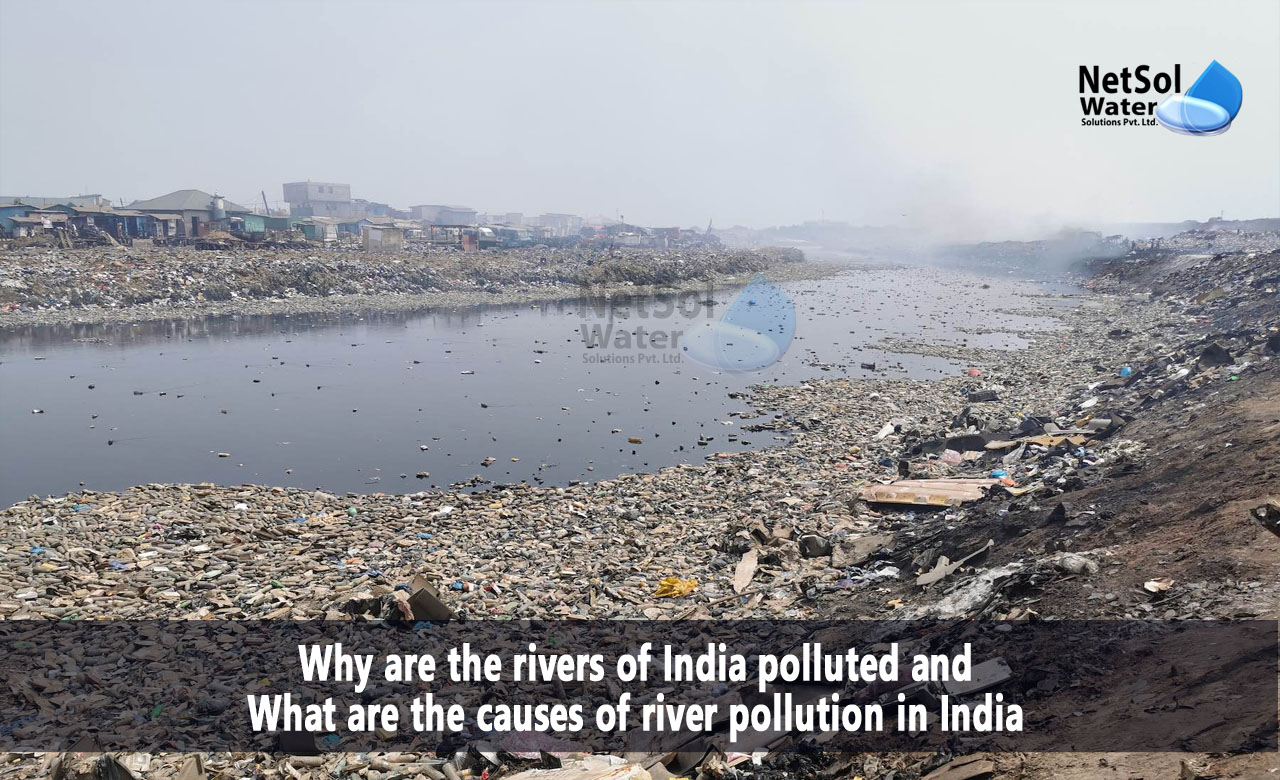What are the causes of river pollution in India?
Rivers are the lifelines of India, supplying water for drinking, irrigation, industries, households, and ecology. They also have cultural and religious importance. However, now from a long time, India’s rivers have been going through severe pollution issues, affecting the health and livelihoods of millions of human beings and being perilous and harmful to the biodiversity of the river basins.
According to a report via the Central Pollution Control Board (CPCB), out of the 351 river stretches monitored throughout the country, 323 had been observed to be polluted in 2015. The important reasons of river pollutants in India can be labelled into classes: point sources and non-point sources.
Point sources of river pollution:
Point sources are people who discharge pollution into rivers from particular places, together with pipes, drains, or outlets. The main point sources of river pollution in India are discussed below:
1. Domestic sewage
This is the sewage generated from household activities, which includes washing, bathing, cooking, and sanitation. It includes organic matter, pathogens, nutrients, and chemical compounds that could degrade the water quality and cause sicknesses. According to a study of CPCB, about 62,000 million litres per day (MLD) of sewage is generated in urban regions of India, however approximately only 23,277 MLD (37%) is handled and managed before being discharged into rivers. The untreated or partly treated water flows into the water bodies, making them unfit for human use and aquatic life.
2. Industrial effluents:
This is the sewage produced by means of various industries, along with textiles, leather, chemical compounds, paper, sugar, and so forth. It incorporates poisonous substances, including heavy metals, acids, dyes, pesticides, and solvents that could contaminate the water and harm the surroundings. According to a study done by the CPCB, approximately 13,468 MLD of commercial effluents are generated in India, however only approximately 60% is dealt with before being discharged into rivers. The effluent is both dumped directly or via drains into the water bodies, inflicting pollution and human health risks.
3. Religious practices:
Many Indians carry out rituals and ceremonies on the banks of rivers. These practices result in the build up of natural and inorganic substances, which include plant life, clothing, plastics, metals, etc., within the riverbeds and water columns. These materials not only lower the dissolved oxygen ranges and increase the biochemical oxygen demand (BOD) of the water but also pose a risk to the aquatic fauna and vegetation.
Non-point resources of river pollutants
Non-factor sources are those that diffuse pollution into rivers from various sources over a massive vicinity. The important non-point sources of river pollutants in India are:
1. Agricultural runoff:
This is the excess water that flows from agricultural fields into rivers after rainfall or irrigation. It incorporates fertilizers, pesticides, herbicides, and soil particles which could affect the water bodies and ecology. The fertilizers and soil debris can increase the nutrient levels and turbidity of the water, which leads to eutrophication and sedimentation. The insecticides and herbicides can be toxic to aquatic organisms and human beings also.
2. Urban runoff:
This is the extra water that flows from urban areas into rivers after rainfall or storm water drainage. It incorporates solid waste, garbage and litter, oil, grease, metals, and other pollutants that can degrade the water exceptionally and also degrade the aesthetics. The solid waste and litter can clog the river channels and decrease the flow speed. The oil, grease, metals, and different pollutants can be harmful to aquatic life and human health also.
3. Natural factors:
These consist of natural phenomena consisting of floods, landslides, earthquakes, volcanic eruptions etc., that could modify the physical, chemical or organic characteristics of rivers. They can introduce sediments, particles, minerals, gases, or microorganisms into rivers which could have an effect on their satisfactory and ecology.
Summary:
The pollution of India's rivers is a complex and urgent issue that demands our immediate interest and attention. Addressing those multifaceted causes calls for a coordinated attempt from authorities, industries, communities, and environmental organisations. Implementing stringent environmental guidelines, investing in modern-day sewage treatment infrastructure, selling sustainable agricultural practices, and adopting cleaner commercial technologies are essential steps toward safeguarding the fitness and vitality of India's rivers. By recognizing and addressing the basic causes of river pollutants, we will be able to pave the way for a extra sustainable and ecologically balanced destiny.
Leading manufacturer of sewage treatment plants in India.
Netsol Water is the leading manufacturer, supplier, and exporter of a quality selection of water treatment, and sewage treatment products in India, by using advanced sewage treatment methods.
RO plants, water softeners, ETPs, STPs, DM plants, AMC, O&M, Ultra filtration, UV, Ozonation, ZLD plants, Anoxic tanks, and other goods and services are available from us. We also provide services to businesses in sectors including automotive, pharmaceutical, textile, pulp & paper, beverages, refineries, schools, hospitals, office buildings, and hotels, among others.
Netsol Water is Greater Noida-based leading water & wastewater treatment plant manufacturer. We are industry's most demanding company based on client review and work quality. We are known as best commercial RO plant manufacturers, industrial RO plant manufacturer, sewage treatment plant manufacturer, Water Softener Plant Manufacturers and effluent treatment plant manufacturers. Apart from this 24x7 customer support is our USP. Call on +91-9650608473, or write us at enquiry@netsolwater.com for any support, inquiry or product-purchase related query.



